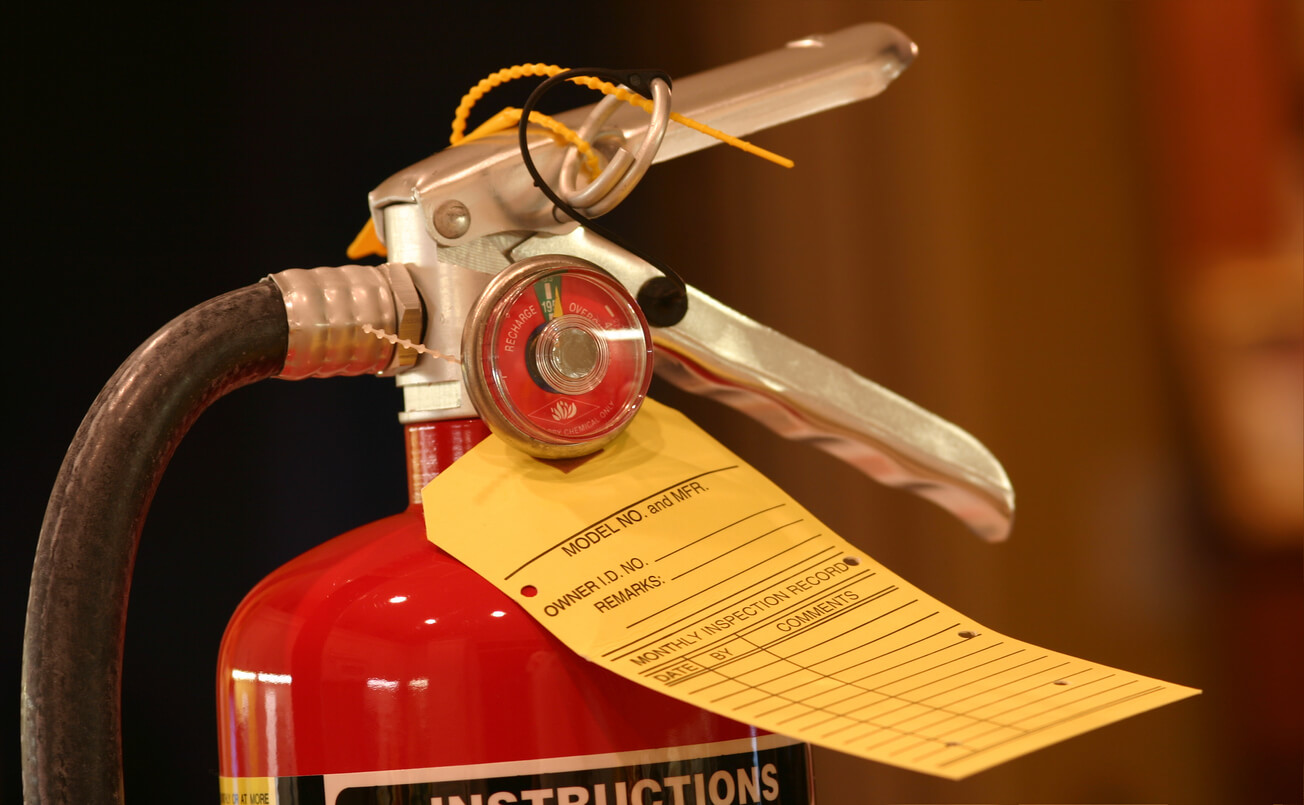What is Hydrostatic Testing?
Fire extinguisher hydrostatic testing is an essential safety evaluation that tests an extinguisher’s ability to handle pressurized liquid without leaking or presenting other structural flaws in the equipment.Fire extinguishers are an essential component of keeping a facility safe. Maintenance of fire extinguishers, including hydrostatic testing, is critical to ensuring that this life-saving equipment is ready and available in the event of a fire incident. A simple visual inspection alone is not enough.
Let’s learn all about fire extinguisher hydrostatic testing and why it’s an important part of emergency maintenance and preparedness.
What is Hydrostatic Testing?
Hydrostatic testing is a process that evaluates a fire extinguisher's critical components including but not limited to:
- Shell
- Cylinder
- Hose assembly
During this test, the fire extinguisher is pressurized with a liquid to ensure there are no leaks or structural flaws in the equipment. This safety assessment is essential for confirming that extinguishers will operate correctly and safely when needed. There were around 1,300 fires in the U.S. in 2021, highlighting the value of ensuring fire safety equipment is tested and ready for use.
Understanding the Hydrostatic Testing Process
The hydrostatic testing process involves several key steps. Here’s a brief overview to help you understand how it works:
- Visual Inspection - Each test begins with a comprehensive visual inspection. During this visual evaluation, the tester will check for external damage, corrosion, and other signs of wear and tear.
- Discharge and Preparation - Next, the fire extinguisher is discharged and depressurized. This allows the tester to remove the valve for the next stages of the test.
- Pressure Testing - The extinguisher is filled with water, then pressure is applied to a specified level. This stage checks for leaks and ensures that the cylinder can handle pressure without failing.
- Monitoring and Analysis - The technician will carefully monitor how the extinguisher reacts to the pressure test. If there are any pressure problems or structural changes, this could indicate a potential flaw.
- Safety Precautions - Throughout the testing process, strict safety precautions are observed. This includes the use of protective gear and conducting tests in controlled environments.
- Documentation - After the test, results are well documented for record-keeping purposes to ensure compliance with safety standards and guidelines.
After the test is completed, the technician will either pass or fail the extinguisher. In the event of a failure, the equipment is not suited for use and will need to be replaced. If the extinguisher passes, it must be recharged and prepared for future use. This is when the extinguisher will be drained, cleaned, and dried. The equipment tester will replace the necessary parts and refill the extinguisher with the appropriate extinguishing agent.
Fire Extinguisher Hydrostatic Test Requirements
The National Fire Protection Association (NFPA) sets specific standards for testing based on different types of fire extinguishers.
These requirements are laid out in full detail in NFPA 10: Standards for Portable Fire Extinguishers. When it comes to testing frequency, it depends on the type of extinguisher:
- Every Five Years - Pressurized water, carbon dioxide, and wet chemical extinguishers.
- Every 12 Years - Dry chemical extinguishers
For other types of extinguishers, such as Class D or cartridge-operated dry chemical extinguishers, refer to specific NFPA and/or OSHA guidelines.
Testing is only one element of proper fire extinguisher maintenance. There are also inspections, such as visual inspections, that need to occur on a regular basis — often at shorter intervals. Inspections are essential as they help businesses understand when to remove fire extinguishers due to damage or expiration.
Importance of Professional Testing
In 2021, fire incidents caused over $16 billion worth of damage in the U.S. alone. Fire extinguisher hydrostatic testing is one way, alongside regular inspections, business owners can stay safe and ready for any emergency.
Hydrostatic testing, while essential, is a complex process that should only be carried out by a certified technician. Professional testing ensures that the extinguisher will operate properly in a fire emergency and can prevent possible malfunctions or hazards.
The testing process is also an issue. Because high-pressure water is an essential part of testing an extinguisher, proper safety procedures are a must, and a professional will come ready with the tools, knowledge, and skill necessary to perform the test safely. Improper testing can lead to inadequate pressure maintenance, risking extinguisher failure when needed most, and can even result in workplace accidents or legal liabilities.
Record Keeping and Compliance
Another key benefit of using a professional testing service is the compliance paper trail. After testing, a technician will keep detailed records. These will include:
- Date of test
- Technician details
- Results
Proper record-keeping is not only a compliance requirement but also essential for safety audits. Records help track maintenance schedules and make sure that equipment is regularly tested and safe for use.
Hydrostatic Testing: A Critical Component to Staying Safe and Compliant
Fire extinguishers are essential for fire safety. Unfortunately, just purchasing an extinguisher is not enough. Businesses need to follow proper inspection and maintenance standards to stay compliant and safe.
Get in touch if you need a certified hydrostatic test or would like to schedule regular fire extinguisher maintenance. Experienced technicians will assess the condition of your equipment and ensure optimal performance and regulatory compliance.








